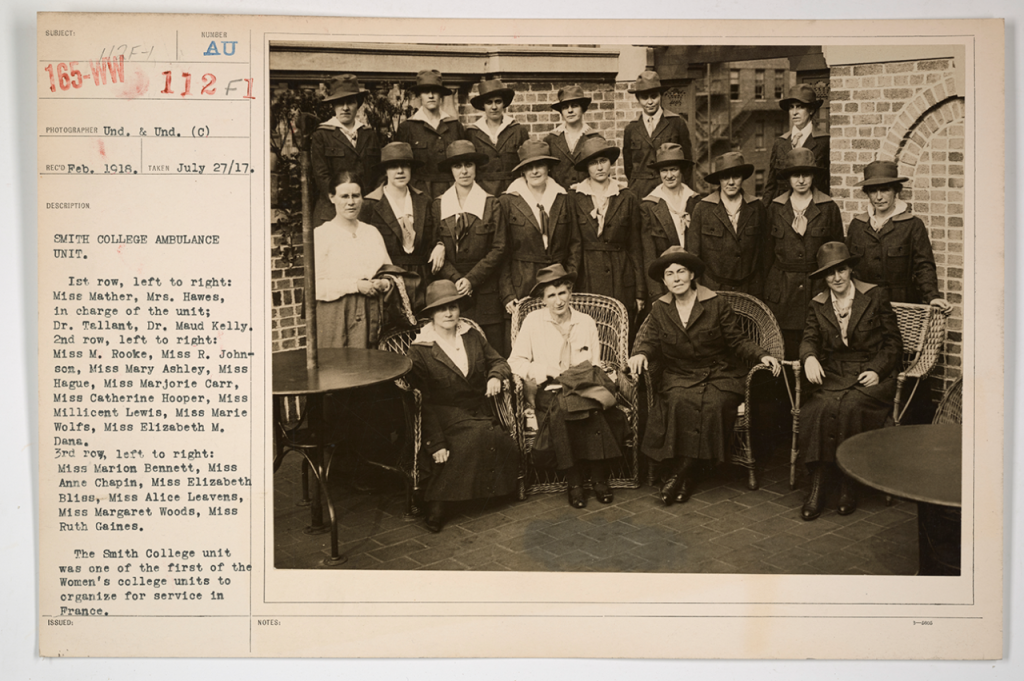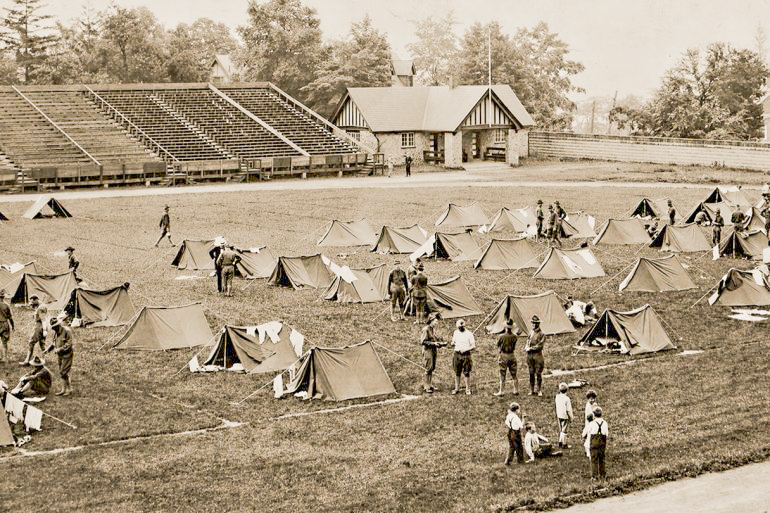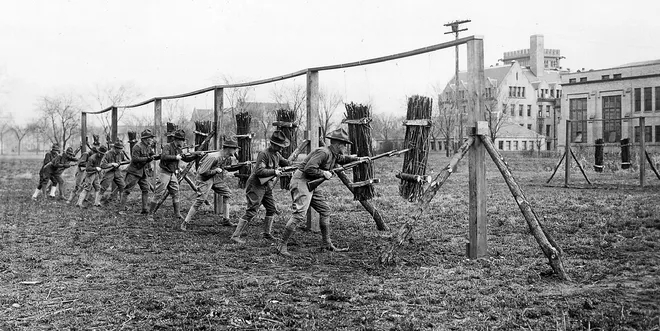
“Student participation in the military was especially strong on the East Coast. At Harvard and Yale, for example, enrollments dropped by 40 percent in a single year, with Princeton and Cornell showing declines of 35 percent and 27 percent re-spectively. On the West Coast, however, only about 10 percent of the students at Stanford left school for military service. College songs play a prominent role in the activities, with Stanford hosting a chorus of ten thousand Student Army Training Corps cadets and soldiers on the university football field in June 1918 to join with Madame Schumann-Heink for what was described as the “world’s largest musical event.”
Given the dependence on enrollments and tuition payments, college presidents were fearful. President Woodrow Wilson offered a mutually beneficial solution with the creation of the Student Army Training Corps (SATC) in July 1917. The SATC quickly established on-campus training programs for cadets and officers that were funded by the federal government and provided generous per capita compensation to the cooperating colleges.”

Approximately 540 colleges and universities across the US “turned themselves into training campuses, and roughly 125,000 men were inducted into the Students’ Army Training Corps. Participating institutions received much-needed funds to house, feed and instruct student trainees; in return the government would receive a mentally and physically trained body of fighting men.” The significance of the SATC was that it smoothly connected the campus to the larger national war effort.
The SATC transformed how the American public viewed the campus. College and university presidents scored a remarkable coup by persuading national leaders and the public that a comprehensive, effective war commitment required college-trained leaders and also many kinds of civilian expertise that the resilient American campus was best suited to provide. The colleges benefited from having Woodrow Wilson as president of the United States, for he shared with the academic leaders an expanded notion of leadership and national service.

(Instead of going straight to war,) hundreds of thousands of young men were brought onto campuses as part of the SATC. Colleges had to amend their admissions requirements in order to comply with federal guidelines for officer recruitment. Dormitories and gymnasia were converted so as to house military exercises. Uniformed cadets were the typical college students, at least for a few years. Some colleges actually gained both new federally subsidized construction projects and student enrollments, thanks to the SATC. (However,) between the 1916-17 academic year and 1917-18, Harvard’s enrollment had declined from 4,976 to 2,998— representing a massive decline of in tuition income.
On balance, the major role campus played during World War I was to serve as a convenient site for the training of military personnel. (One notable by-product of this role was the innovative contributions made to the science of large-scale psychological and aptitude testing by university-based psychologists, who developed the tests to be used for military recruits, not college applicants.)

Perhaps the most visible legacy of World War I on the American campus is the architectural monuments of the 1920s. Most colleges received abundant donations from alumni and citizens to pay for the construction of elaborate facilities named in honor of students who had served in World War I. The most popular monument was the huge football facility, often called Memorial Stadium, with seating capacities of between thirty thousand and seventy thousand. The proliferation of such monuments attests that the popular appeal of student extracurricular life, especially college football as a spectator sport for mass audiences, was increasing its hold.” text from John Thelin’s A History of American Higher Education

